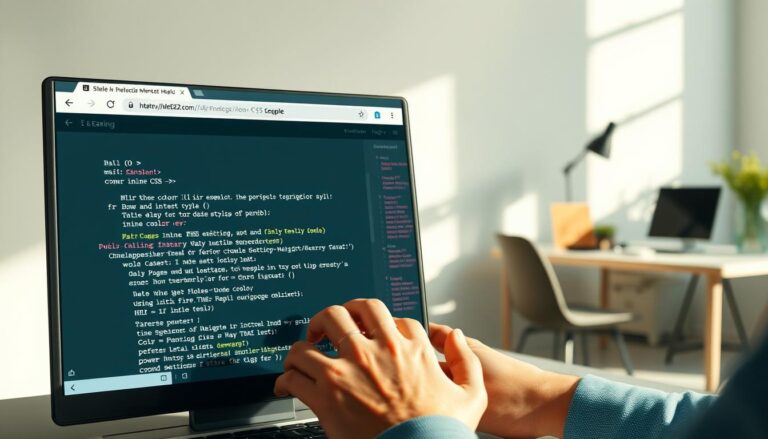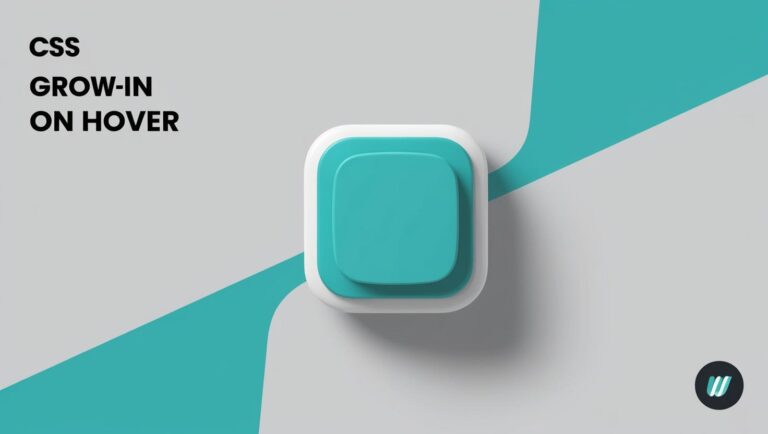Adjusting transparency in web design can significantly enhance the visual appeal of a site. One common challenge is modifying the background image or color without impacting the child elements. This is where understanding CSS background opacity becomes essential.
The opacity property allows you to control the transparency of an element, creating a layered effect. However, it’s crucial to ensure that text and other components remain readable and unaffected. This tutorial will guide you through practical methods to achieve this balance.
We’ll explore various techniques to improve readability over background images or colors. Whether you’re designing a sleek landing page or a vibrant portfolio, mastering these skills will elevate your web design projects. Let’s dive into the details and learn how to create stunning, professional layouts.
Key Takeaways
- Adjusting transparency enhances visual appeal in web design.
- Child elements should remain unaffected when modifying backgrounds.
- The opacity property controls the transparency of an element.
- Practical examples will help you achieve desired effects.
- Improving readability over background images is a key goal.
Introduction to CSS Background Opacity
Transparency in design can transform how users interact with a website. It adds depth, focus, and a modern touch to layouts. One of the most effective ways to achieve this is by adjusting the transparency of elements, ensuring the design remains clean and functional.
When you modify the transparency of an element, it affects both the parent and its child elements. This can sometimes lead to readability issues if not handled correctly. Understanding how to control this balance is crucial for creating visually appealing designs.
Purpose of Opacity in Web Design
Opacity plays a key role in enhancing user experience. It allows designers to create layered effects, making certain elements stand out while others recede. For example, a semi-transparent overlay can make text more readable over a busy image.
Another important concept is the stacking context. When you set an element’s transparency to less than 1, it creates a new stacking context. This determines how elements are layered and displayed on the page.
Overview and Use Cases
Transparency is widely used in modern web design. Here are some common applications:
- Improving text visibility over images or gradients.
- Creating overlay effects for modals or pop-ups.
- Adding depth to buttons, cards, or other UI elements.
By selectively adjusting transparency, designers can improve both aesthetics and functionality. For instance, a subtle overlay can guide user attention without overwhelming the content.
“Transparency isn’t just about looks—it’s about creating a seamless user experience.”
In the next sections, we’ll dive deeper into the technical aspects of achieving these effects. From understanding CSS properties to troubleshooting common issues, you’ll gain the skills needed to master transparency in your designs.
Understanding the CSS Opacity Property
The CSS opacity property is a powerful tool for controlling element transparency. It allows designers to adjust how visible an element is, creating layered effects that enhance user experience. By default, the opacity value is set to 1, meaning the element is fully opaque.
When you reduce the opacity of a parent element, it uniformly affects all its child elements. This can sometimes lead to readability issues if not managed carefully. Understanding how this property works is crucial for creating visually appealing designs.
Default Opacity Values and Inheritance
The default opacity value of 1 ensures that elements are fully visible. Lowering this value makes the element more transparent. However, it’s important to note that opacity is inherited by child elements. This means that if you set a parent element’s opacity to 0.5, all its children will also have an opacity of 0.5.
Here’s a quick example:
.parent {
opacity: 0.5;
}
.child {
opacity: 1; /* This will still appear as 0.5 */
}
Exploring Stacking Context in CSS
When you set an element’s opacity to less than 1, it creates a new stacking context. This determines how elements are layered and displayed on the page. A stacking context can affect the visual hierarchy, making some elements appear in front of others.
For instance, a semi-transparent overlay can make text more readable over a busy image. This is because the overlay creates a new stacking context, allowing the text to stand out.
Here’s a comparison of different opacity values and their effects:
| Opacity Value | Effect |
|---|---|
| 1 | Fully opaque |
| 0.75 | Slightly transparent |
| 0.5 | Half transparent |
| 0.25 | Mostly transparent |
| 0 | Fully transparent |
By understanding these concepts, you can better manage transparency in your designs. Always test your layouts to ensure readability and visual appeal.
Techniques for Adjusting Background Only
Achieving the perfect balance between background transparency and element clarity is a common challenge in web design. When modifying the background, it’s essential to ensure that text and other child elements remain unaffected. This section explores two effective methods: using RGBA color values and implementing linear-gradient overlays.
Using RGBA and Alpha Channels for Background Colors
RGBA color values allow designers to specify an alpha channel along with a base color. The alpha channel controls transparency, enabling you to adjust only the background without affecting child elements. Here’s an example:
.element {
background-color: rgba(255, 0, 0, 0.5); /* Red with 50% transparency */
}
This technique is ideal for creating subtle overlays or enhancing readability over images. However, it’s limited to solid colors and doesn’t work with gradients.
Implementing Linear-Gradient Overlays
Linear-gradient overlays offer more flexibility. By combining transparent and opaque colors, you can create semi-transparent backgrounds that blend seamlessly with the design. Here’s how to implement it:
.element {
background: linear-gradient(to bottom, rgba(0, 0, 0, 0.5), rgba(0, 0, 0, 0.8));
}
This method is perfect for creating layered effects or adding depth to UI elements. It also works well with images, providing a smooth transition between transparency levels.
Comparing RGBA and Gradient Overlays
Both techniques have their advantages and limitations. RGBA is simple and effective for solid colors, while gradients offer more versatility for complex designs. Consider the following comparison:
| Technique | Advantages | Limitations |
|---|---|---|
| RGBA | Easy to implement, works with solid colors | Limited to single-color backgrounds |
| Linear-Gradient | Versatile, works with images and gradients | Requires more complex code |
When choosing between these methods, consider the design requirements and the desired visual effect. Always test your layouts to ensure readability and balance.
How to Use css background opacity with Images
Enhancing web design with controlled transparency can make images and text work harmoniously. One effective way to achieve this is by adjusting the opacity of background images without affecting overlaid content. This technique ensures that text remains readable while the image adds depth to the design.

Utilizing CSS Pseudo-Elements and Absolute Positioning
CSS pseudo-elements like ::before or ::after can be combined with absolute positioning to layer backgrounds. This method separates the image from the content, allowing you to control transparency independently. Here’s a step-by-step guide:
- Create a container for the image and text.
- Use the ::before pseudo-element to insert the background image.
- Apply absolute positioning to the pseudo-element to layer it behind the content.
- Adjust the opacity of the pseudo-element without affecting the text.
Here’s an example of the code:
.container {
position: relative;
}
.container::before {
content: ”;
background-image: url(‘image.jpg’);
position: absolute;
top: 0;
left: 0;
width: 100%;
height: 100%;
opacity: 0.5;
}
This approach ensures that the child elements, such as text, remain fully visible while the background image is semi-transparent.
Real-Life Applications and Benefits
This technique is particularly useful in scenarios where readability is crucial. For instance, a hero section with a vibrant background image can benefit from reduced opacity to make the text stand out. Similarly, overlays on modals or pop-ups can use this method to maintain clarity.
“Controlling background transparency ensures that design elements complement each other, enhancing user experience.”
Potential Pitfalls and Tips
While this method is effective, there are a few things to keep in mind:
- Ensure the image and text have sufficient contrast.
- Avoid setting the opacity too low, as it may make the background image indistinguishable.
- Test the design on different devices to ensure consistency.
Here’s a comparison of setting opacity on the entire element versus using pseudo-elements:
| Method | Pros | Cons |
|---|---|---|
| Entire Element Opacity | Simple to implement | Affects all child elements |
| Pseudo-Elements | Independent control of background and content | Requires additional code |
By following these best practices, you can create designs that are both visually appealing and functional. Mastering this technique will elevate your web design projects, ensuring a seamless user experience.
Preventing Child Element Transparency
Maintaining clarity in web design while adjusting transparency is a key challenge for developers. When the parent element has reduced transparency, its child elements often inherit the same level, leading to readability issues. This section explores effective strategies to keep child elements fully opaque while adjusting the background color or image.
Absolute Positioning Strategies
One effective method is using absolute positioning to separate the background layer from the content. By placing the background in a pseudo-element, you can control its transparency independently. Here’s an example:
.container {
position: relative;
}
.container::before {
content: ”;
background-color: rgba(0, 0, 0, 0.5);
position: absolute;
top: 0;
left: 0;
width: 100%;
height: 100%;
}
This approach ensures that the child elements remain fully visible, even if the background is semi-transparent. It’s particularly useful for creating overlays or enhancing readability over images.
Role of Pseudo-Elements
Pseudo-elements like ::before and ::after are powerful tools for managing transparency. They allow you to add a separate layer for the background, ensuring that the content remains unaffected. This technique is ideal for complex layouts where multiple elements overlap.
“Using pseudo-elements to control transparency ensures that design elements complement each other, enhancing user experience.”
Stacking Context Considerations
When working with transparency, it’s important to understand the stacking context. Reducing the parent element’s transparency creates a new stacking context, which can affect how elements are layered. By using pseudo-elements, you can manage this hierarchy effectively, ensuring that child elements are not compromised.
Practical Tips
- Use absolute positioning to separate background and content layers.
- Leverage pseudo-elements for independent transparency control.
- Test designs on multiple devices to ensure consistency.
- Maintain sufficient contrast between text and background for accessibility.
By implementing these strategies, you can create visually appealing designs that prioritize readability and user experience. Mastering these techniques is essential for modern web development.
Advanced Methods for Background Transparency
Creating dynamic transparency effects can elevate user interaction and design sophistication. By leveraging advanced techniques, you can achieve smooth transitions and interactive visuals that enhance the overall experience. These methods allow for precise control over how elements appear and behave, ensuring a polished and professional look.

Transitioning Opacity for Interactive Effects
One powerful way to add interactivity is by using transitions to change the opacity of elements. For example, you can create a hover effect that gradually fades a background image or color. This technique is ideal for buttons, cards, or other UI components that need to respond to user actions.
Here’s how to implement a simple hover transition:
.element {
background-color: rgba(0, 0, 0, 0.5);
transition: opacity 0.3s ease;
}
.element:hover {
opacity: 0.8;
}
This code ensures that the element background smoothly transitions from 50% to 80% opacity when hovered over. The alpha channel in the RGBA value allows for precise control over transparency levels.
The Role of Alpha Channels in Smooth Transitions
Alpha channels play a crucial role in creating seamless transitions. By adjusting the alpha value, you can control how much of the underlying content or image is visible. This is particularly useful when working with layered designs or overlays.
For instance, combining positioning and alpha channels can create a layered effect that enhances depth and dimension. Here’s an example:
.overlay {
position: absolute;
background-color: rgba(255, 255, 255, 0.3);
transition: background-color 0.3s ease;
}
.overlay:hover {
background-color: rgba(255, 255, 255, 0.6);
}
Best Practices for Interactive Transparency
When using dynamic transparency, it’s essential to maintain readability and usability. Here are some tips to ensure your designs remain functional:
- Ensure sufficient contrast between text and element background.
- Test transitions on different devices for consistency.
- Avoid overly complex animations that may distract users.
“Interactive transparency should enhance, not hinder, the user experience. Always prioritize clarity and functionality.”
By mastering these advanced techniques, you can create visually stunning and highly interactive designs. Whether you’re working on a portfolio, landing page, or web application, these methods will help you achieve professional results.
Best Practices for Accessibility and Opacity Control
Balancing design aesthetics with accessibility is essential when working with transparency effects. Ensuring that your design is both visually appealing and user-friendly requires careful attention to contrast, readability, and user preferences. This section explores how to achieve this balance effectively.
Ensuring Sufficient Color Contrast
When adjusting transparency, maintaining high contrast between text and background is crucial. Low contrast can make content difficult to read, especially for users with visual impairments. The WCAG guidelines recommend a minimum contrast ratio of 4.5:1 for normal text and 3:1 for large text.
Here’s an example of how to set background transparency while maintaining contrast:
.element {
background-color: rgba(0, 0, 0, 0.5); /* 50% transparency */
color: white; /* Ensures readability */
}
This approach ensures that the entire element remains accessible, even with reduced transparency.
Adapting to User Preferences with Media Queries
Users have different preferences and needs, which can be accommodated using media queries. For instance, the prefers-reduced-transparency media query allows you to adjust transparency settings for users who prefer less visual complexity.
Here’s how to implement it:
@media (prefers-reduced-transparency: reduce) {
.element {
background-color: rgba(0, 0, 0, 1); /* Fully opaque */
}
}
This ensures that your design adapts to user preferences, providing a better product experience.
“Accessibility isn’t just a feature—it’s a fundamental aspect of good design.”
By following these best practices, you can create designs that are both stylish and accessible. Always test your layouts to ensure they meet accessibility standards and provide a seamless user experience.
Conclusion
Mastering transparency in web design ensures both visual appeal and functionality. Throughout this guide, we’ve explored techniques like RGBA colors, pseudo-elements, and absolute positioning to control transparency without affecting child elements. These methods allow you to create layered designs while maintaining readability and usability.
Accessibility remains a priority when working with transparency. Ensuring proper contrast between text and image elements is essential for an inclusive user experience. By using css effectively, you can balance aesthetics with technical constraints, creating designs that are both beautiful and functional.
We encourage you to apply these techniques in real-world scenarios. Experiment with transitions, overlays, and gradients to enhance your designs. Consistent testing across devices ensures optimal user experience. Start implementing these strategies today to elevate your web design projects.





